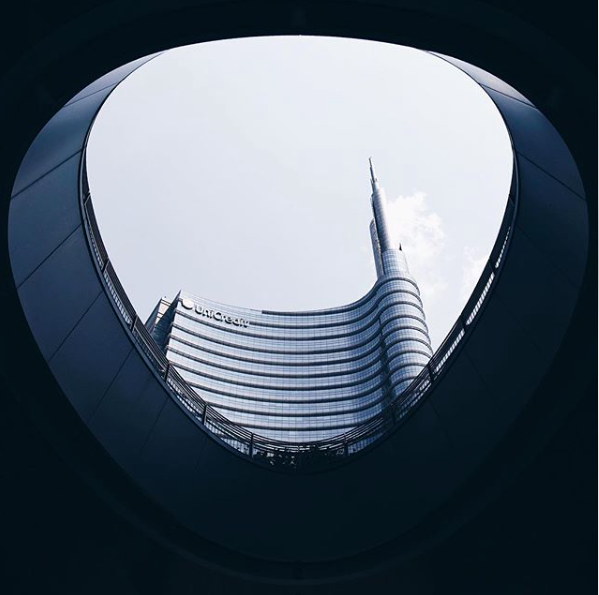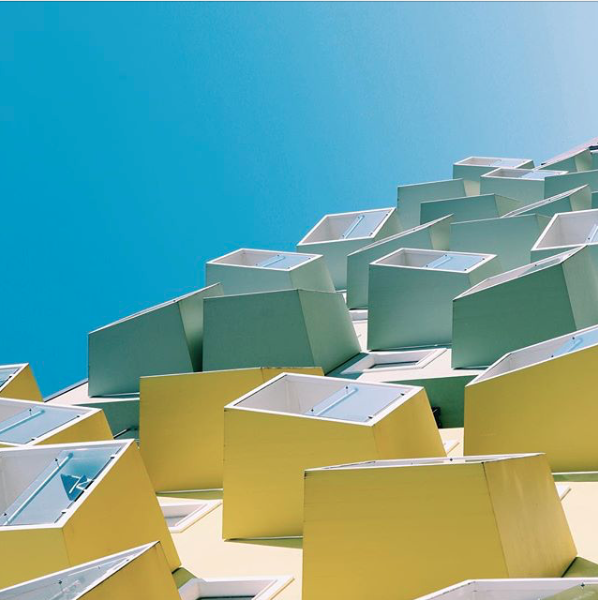A Virtual Truth
Published in A New Type of Imprint magazine, Volume Six
Architecture, graphic lines and rhythmic patterns are what makes Marius Svaleng Andresen’s (@lekestove) Instagramfeed so pleasing to the eye. Shared in a grid of three, his pictures creates a surreal illusion of what the world looks like through a camera lens. But even with his consistent and minimalistic style, there is a part of him in every single photo. November, last year, he even got to exhibit his photographs in Oslo and a great deal were sold to become a part of someone elses lives.
How did your interest in photography and Instagram come about?
I’ve always been attracted to photography in one way or another, from documenting family vacations, school camps and travels, up to the point I'm at now. Storytelling and visual expression has resonated with me from an early age. However, I obtained a certain vision on how I wanted to approach photography only a couple of years ago, and I owe a lot of that to getting my hands on a smartphone with a decent camera and discovering Instagram as a photo sharing platform. A big part of photography for me is basically to express myself visually. Although my photos aren’t always explicitly personal, I feel as they speak a lot about who I am. They’re not devoid of emotion even if I'm mostly photographing architecture and other non-figurative stuff. The social aspect of Instagram certainly breathes life into the app. It's something different from using for instance a basic Flickr-page. You have this one grid to tend to, and people interact a lot more with your photos on Instagram. The immediate feedback and the feeling that I can actually bring something to the table is the main reason why I use Instagram.
How would you describe your relationship with Instagram?
I post photos on Instagram almost daily. Mainly because I take a whole bunch of photos, but also because Instagram is perfect for showcasing them. I follow talented people, and a small herd of people follow me. I've also got a second account (@_svaleng) where I post all the mumbo-jumbo stuff that doesn't fit in on my main profile, so I guess I'm covering a lot of ground, one hashtag at a time. You don’t necessarily have to be a photographer or even that interested in photography to hang out on Instagram, which I think is one of the main reasons it has become so popular as a social media. You can discover a lot of great artists, and many hobby photographers has taken the leap from amateur photo to professional photo thanks to the platform. At the same time there's a lot of huge egos and trends that you're bound to encounter on Instagram, but luckily you can choose who you want to follow based on your own terms and interests.
What kind of photos do you like to post on Instagram?
It definetly has to evoke some kind of feeling in me in one way or another. To some extent, there's a part of me in all my photos. I enjoy shooting architecture and the subtlety of how humans interact with their environment. By utilizing architecture and inanimate objects in an artistic context, the objects achieve a completely different aesthetic function. These are often things that are neglected in an everyday setting, because people tend to walk past stuff that have always been there, reducing them solely to their function rather than seeing the beauty in mundanity. It's about looking at the details in order to see the bigger picture.
Why do you think your Instagram account has become so popular?
I’ve maintained a consistent style since I started using Instagram, and I like to think that I’ve evolved as a photographer since i started as well. What's important for me is maintaining a distinct aesthetic and playing around as much as possible with that. I try to avoid limitations, so I experiment both with new things and stuff I've photographed a bunch of times before, and I guess my followers appreciate that.
Tell us about your process of photography.
I use photography as an excuse to put on some music and wander around in the city or on the countryside and just explore. Sometimes I do not take a single picture even though I walk for hours, so I guess people must think I've got some sort of autism. As for taking the photo itself, I usually see something that catches my eye, snap a photo and move on. Subsequently I edit the shot on either my phone or my computer. I crop, color-correct it and adjust settings as exposure and contrast. If I'm happy with the result I post it on Instagram.
Please teach us how to take such great smartphone pictures.
The key to taking better photos with a smartphone is knowing its limits. I shoot with both my iPhone and my DSLR (digital single-lens reflex camera), but I think a simple camera like those on smartphones and the likes are probably the best place to start if you're not well-versed when it comes to photography. It's a great tool to learn the basics of composition and using light to ones advantage, which is Photography 101. Those skills doesn't come by themselves when purchasing the most expensive DSLR on the market. Look out for interesting stuff to photograph, frame it well and post process them just enough in order to get the result you want. Learn to rely more on your photography skills than on your editing skills. Find your niche and develop a style that corresponds with you and be uncompromising. Don't take photos with a certain aesthetic just because you know that's what people like, then you're just taking away the dimension of photography that makes it personal and unique.


